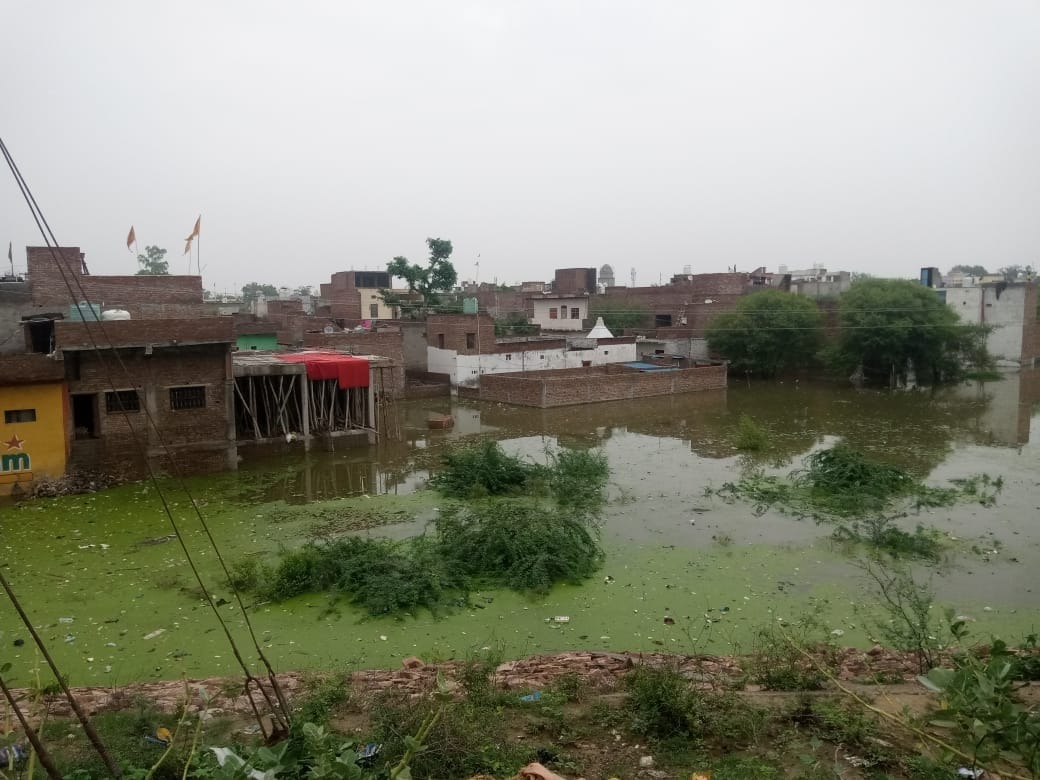Dr. B. Siva Sankara Rao, J.@mdashThe injured-claimant filed this appeal, having been aggrieved by the Order/Award of the learned Chairman of the Motor Accidents Claims Tribunal-cum-V Additional District Judge (Fast Track Court), Nizamabad (for short, ''Tribunal'') in M.V.O.P. No. 115 of 2002 dated 29.09.2004, awarding compensation of Rs. 3,000/- as against the claim of Rs. 2,00,000/- (Rupees two lakh only), for enhancement of compensation as prayed for in the claim petition u/s 166 of the Motor Vehicle Act, 1988 (for short, ''the Act''). Heard Sri M. Raja Malla Reddy, the learned counsel for the appellant and Sri C.V. Rajeev Reddy, learned standing counsel for the 2nd respondent-New India Insurance Company Limited. The 1st respondent who was served with notice is called absent with no representation and thus taken as heard the 1st respondent for the absence to decide on merits and perused the record. The parties hereinafter are referred to as arrayed before the Tribunal for the sake of convenience in the appeal.
2. The contentions in the grounds of appeal in nutshell are that the award of the Tribunal is contrary to law, weight of evidence and probabilities of the case, that the Tribunal was erred in arriving a wrong conclusion on the quantum of compensation and awarded a very meager amount instead of awarding as claimed and prayed for from nature of the injuries proved sustained, pain and sufferance there from, treatment undergone and amount incurred for the same and hence to allow the appeal by enhancing and awarding full compensation as prayed for.
3. Now the points that arise for consideration in the appeal are:
1. Whether the compensation awarded by the Tribunal is not just and requires interference by this Court while sitting in appeal against the award and if so with what enhancement to arrive a just compensation and with what rate of interest?
2. To what result?
POINT-1:
4. The facts of the case as proved before the Tribunal and not in dispute in this appeal are that, on 25.10.2001 due to the rash and negligent driving of the driver of the crime vehicle (Auto bearing No. AP-25-U-750) i.e. belongs to the 1st respondent insured with the 2nd respondent covered by Ex. A.8 policy, the same was turtled, as a result the claimant by name Sri Madiri Sailoo, aged about 20 years, resident of Mamidipalli Village, Makloor Mandal, Nizamabad district, milk vendor by avocation, travelling in said auto, sustained multiple and grievous injuries i.e. fracture injury on both the bones of right leg, injuries on head (as per Ex. A.5 medical certificate), which occurrence is covered by Ex. A.1 First Information Report in Cr. No. 188 of 2001 u/s 338 IPC. The Tribunal from the evidence of P.W.1 claimant and P.W.2-Dr. T. Narsing Rao, with reference to Ex. A.5, for said injuries came to the conclusion of P.W.1 sustained only two simple injuries and was treated as out-patient only for one day in Government hospital but not believing the fracture injury, disability certificate and medical expenses incurred towards fracture injury, awarded only Rs. 30007- towards the injuries and for pain and sufferance, against respondent Nos. 1 and 2 jointly severally.
5. It is the contention of the learned counsel for the claimant in support of the grounds of the appeal that the compensation awarded by the Tribunal is unjust, unreasonable and the Tribunal is erred in awarding such a meager amount though it was supposed to believe the fracture injury, loss of earnings, medical expenses and other aspects and award just compensation by applying correct multiplier.
6. Before coming to decide, what is just compensation in the factual matrix of the case, It is apt to state that perfect compensation is hardly possible and money cannot renew a physique or frame that has been battered and shattered, nor relieve from a pain suffered as stated by Lord Morris. In Ward v. James, 1965 (1) All. E.R. 563, it was observed by Lord Denning that award of damages in personal injury cases is basically a conventional figure derived from experience and from awards in comparable cases. Thus, in a case involving loss of limb or its permanent inability or impairment, it is difficult to say with precise certainty as to what composition would be adequate to sufferer. The reason is that the loss of a human limb or its permanent impairment cannot be measured or converted in terms of money. The object is to mitigate hardship that has been caused to the victim or his or her legal representatives due to sudden demise. Compensation awarded should not be inadequate and neither be unreasonable, excessive nor deficient. There can be no exact uniform rule in measuring the value of human life or limb or sufferance and the measure of damage cannot be arrived at, by precise mathematical calculation, but amount recoverable depends on facts and circumstances of each case. Upjohn L.J. in Charle red House Credit v. Tolly, 1963 (2) All. E.R. 432 remarked that the assessment of damages has never been an exact science and it is essentially practical. Lord Morris in Parry v. Cleaver, 1969 (1) All. E.R 555 observed that to compensate in money for pain and for physical consequences is invariably difficult without some guess work but no other process can be devised than that of making a monitory assessment though it is impossible to equate the money with the human sufferings or personal deprivations. The Apex Court in
7. From the above legal position, coming to the factual matrix, what the Tribunal taking into consideration of the fracture sustained by the P.W.1 but the disability caused there from was not taken note of by the Tribunal, in arriving the compensation for the injuries and medical expenses etc., awarded of Rs. 3,000/- is utterly low and unjust, thereby this Court by taking all the aspects into consideration i.e. nature of injuries and period of treatment, medical expenditure, pain and sufferance, loss of earnings, attendant charges and transport charges during treatment, inclined to enhance by awarding just compensation.
8. Having regard to the above, the just compensation, which the claimant is entitled, comes to Rs. 25,000/- for the fracture injury on both the bones (tibia and fibula) of right leg, Rs. 3000/- for the other lacerated injury and for medical expenses, for loss of earnings during treatment, for attendant charges and for transport charges to hospital in all Rs. 7,000/- which comes to a total of Rs. 35,000/- to award. The interest at 9% per annum awarded by the Tribunal even not in dispute, from the settled proposition of law, in
POINT -2:
In the result, the appeal is partly allowed by modifying the Award of the Tribunal on quantum of compensation by enhancing the same from Rs. 3,000/- to Rs. 35,000/- (Rupees thirty five thousand only) with interest at 7 1/2% per annum from date of the claim petition till realization/deposit with notice. Respondent Nos. 1 and 2, who are jointly and severally liable to pay the compensation, are directed to deposit within one month said amount with interest from the date of petition, failing which the claimant can execute and recover. On such deposit or execution and recovery, the claimant is permitted to withdraw the same. There is no order as to costs in the appeal.

